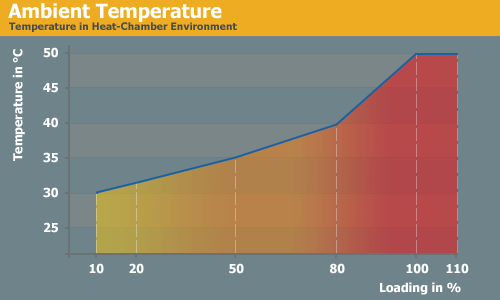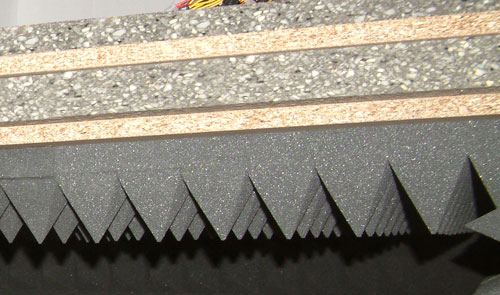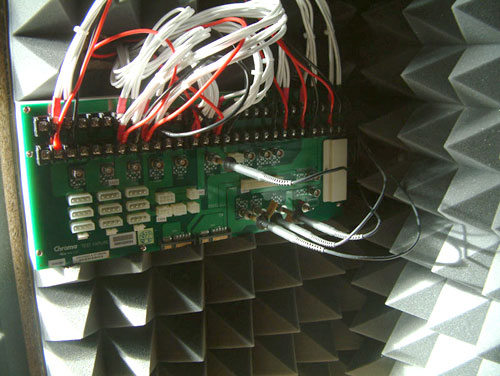Cooler Master UCP 900W
by Christoph Katzer on July 29, 2008 3:00 AM EST- Posted in
- Cases/Cooling/PSUs
Testing with the Chroma ATE Programmable Load

Our test equipment consists of two Chroma programmable DC Loads that enable us to test power supplies with an output of up to 1500W. The biggest advantage of the Chroma DC Loads is simply the high precision it provides. It can measure differences as small as 0.001V and 0.0001A, which will provide us with best-in-class results.
When programming the Chroma with specific amounts of load calculated according to the ATX norm, we are able to load power supplies to an exact percentage. We can now show results at every specific percentage needed. To get the best overview of a power supply, we load each unit with 10%, 20%, 50%, 80%, 100%, and 110% of the specified output. This is easy to calculate for a 1000W power supply: the 10% load is 100W and 110% load is 1100W. Remember that this is the amount of power the PSU delivers; due to inefficiencies, a power supply will actually draw more power from the wall.
Note: If you would like to know more about our testing methodology, equipment, and environment, please read our PSU testing overview.
We have added an additional 10% on the highest load to see how the units perform with overload. This test will be performed in all future reviews. The overload test is performed at room temperature as well as under more stressful conditions; to ensure we are not too cruel to the power supplies, we will keep the ambient temperature at 50°C in the stress test. Experience shows that many units can stand the overload at room temperature but will experience problems with higher temperature and overload together. Only the best-built units will survive this.

The Testing Environment
There is one flaw in testing power supplies with programmable loads while trying to measure the sound pressure levels at the same time. Because the programmable loads get very loud, there is no chance of hearing the power supply on the test stand. In order to make accurate measurements of the noise levels we needed a way to separate the test unit and the programmable loads. Our solution was to build a very thick box around the unit.

We concluded that a five-layer box with a total thickness of 6" (15cm) containing two layers of wood and three layers of special foam would suffice. It is designed as a box within a box. The inner box does not touch any part of the outer box, making it difficult for acoustic noise to pass through in the form of vibration. Each box is isolated on both sides with a layer of heavy foam that is normally used to insulate engines. On the inside we have an additional layer of 4" (10cm) thick pyramidal foam on every side of the box to eliminate the acoustic waves coming from the test object as well as we can.

To ensure a completely closed system we installed the printed circuit board that the connectors of the power supply are attached to inside the anechoic room/box. In other box designs, you would need to put all the cables through the wall. Unfortunately, that would result in the inside of the box not being fully isolated anymore. Our design keeps everything that needs to be connected inside of the box and maintains isolation.










33 Comments
View All Comments
mindless1 - Tuesday, July 29, 2008 - link
In the past 12 months I've bought 2 Coolermaster PSU and 1 case, all with rebates making close enough to free. They were all an excellent compromise for the price and all rebate checks were received.Yes you may see lots of people that didn't get a rebate check but remember that when something normally costing about $40-50, not $25, ends up around $0 to $10 after a rebate, you have a very large # of people who take advantage of it so even 100 reports of not getting a rebate check may be a small % of total buyers.
I happen to be typing on a system that has a 600W Coolermaster Extremepower PSU in it, while it isn't very old yet at about 8 months, it has done fine thus far with overclocked CPU, video, 4 hard drives. Granted it's only peaking at roughly 300W consumption but a little common sense is good in this area, one doesn't buy a $50 PSU then expect to get 600W out of it long term.
Glenn - Tuesday, July 29, 2008 - link
http://forum.coolermaster.com/viewforum.php?f=29">http://forum.coolermaster.com/viewforum.php?f=29cparka23 - Tuesday, July 29, 2008 - link
I really appreciate the test articles and the time spent on the testing setup. Thanks for the heads up about the 80plus silver certification/marketing ploy. I now see that this is not the PSU for my application.